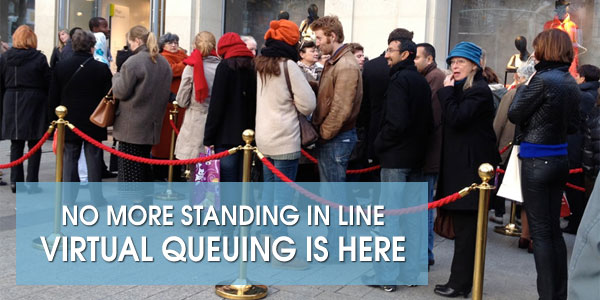Let’s dive into how virtual queuing can transform your call center and turn grumpy callers into happy campers.
1. Boost Customer Satisfaction Like Never Before
Imagine this: A customer calls your support line, hears a friendly voice say, “We’ll call you back when an agent is free,” and then goes about their day. No more tapping fingers or staring at the clock. That’s the magic of virtual queuing.
Here’s why it works:
- Customers feel valued: Offering a callback shows you respect their time. According to Forrester, 75% of customers find callbacks “highly appealing.” And if that doesn’t convince you, SoftwareAdvice.com reports that 61% of customers prefer callbacks over waiting on hold every single time.
- Eliminate frustration: Long hold times are a recipe for disaster. With virtual queuing, you’re cutting out the annoyance factor entirely. As Gartner points out, companies that prioritize customer experience see 60% higher profits than their competitors.
So, if you want to keep your customers smiling (and sticking around), virtual queuing is the way to go.
2. Slash Call Abandonment Rates (And Save Your Agents’ Sanity)
Raise your hand if you’ve ever hung up after hearing, “Your estimated wait time is 20 minutes.” Yeah, we thought so.
The stats don’t lie:
- 60% of customers won’t wait on hold for more than a minute (Velaro).
- Call abandonment rates have skyrocketed from 5% in 2003 to over 13% in 2010 (ICMI).
Every abandoned call means a missed opportunity—and possibly a lost customer. But here’s where virtual queuing shines: it eliminates hold time altogether. Customers stay in the queue virtually, freeing them to do other things while they wait. The result? Fewer hang-ups, happier customers, and less stress for your agents.
3. Supercharge First Call Resolution (FCR) Rates
First Call Resolution (FCR) is the holy grail of call center metrics. Why? Because resolving issues on the first try leads to:
- More efficient use of agent time
- Happier customers
- Fewer repeat calls
Virtual queuing makes FCR easier to achieve. When agents connect with customers via callbacks, they’re not distracted by impatient callers stuck on hold. Instead, they can focus entirely on solving the problem at hand. And let’s be honest—agents who aren’t juggling multiple frustrated callers are agents who perform better.
4. Smooth Out Those Pesky Call Volume Spikes
Picture this: It’s Black Friday, and your call center is flooded with inquiries. Or maybe it’s a snowstorm, and everyone’s calling to check on their delayed orders. Peaks in call volume are inevitable—but they don’t have to derail your operation.
With virtual queuing, you can offer scheduled callbacks, allowing customers to book a time slot for their call. This spreads out the workload and prevents agents from being overwhelmed during peak periods. Plus, it ensures customers get the attention they deserve without feeling like they’re stuck in a never-ending queue.
Pro tip: Use analytics to identify peak times and configure callback slots accordingly. It’s like giving your call center a crystal ball for managing spikes!
5. Cut Telecom Costs (Cha-Ching!)
Let’s talk money. Traditional queuing ties up PSTN lines for the entire duration of a call—even when customers are on hold. And if you’re using toll-free numbers, those per-minute costs can add up fast.
Enter virtual queuing:
- By replacing hold time with callbacks, you free up lines and reduce the total number of minutes consumed.
- Outbound callbacks often come with lower per-minute rates than inbound toll-free calls. For call centers handling millions of calls annually, these savings can be substantial—potentially even covering the cost of implementing the system itself.
In short, virtual queuing isn’t just good for customers; it’s great for your bottom line.

Ready to Take Your Call Center to the Next Level?
Virtual queuing isn’t just a fancy buzzword—it’s a game-changer for call centers looking to improve efficiency, boost customer satisfaction, and cut costs. As Gartner reminds us, businesses that prioritize customer experience see 60% higher profits than their competitors. And with stats like that, who wouldn’t want to hop on the virtual queuing bandwagon?
At Fusion CX, we’re all about helping call centers deliver exceptional experiences. If you’re ready to revolutionize your operations and make your customers fall in love with your brand, it’s time to explore virtual queuing.
So, what are you waiting for? Let’s make “Your call is important to us” a thing of the past—and turn your call center into a customer satisfaction powerhouse.

